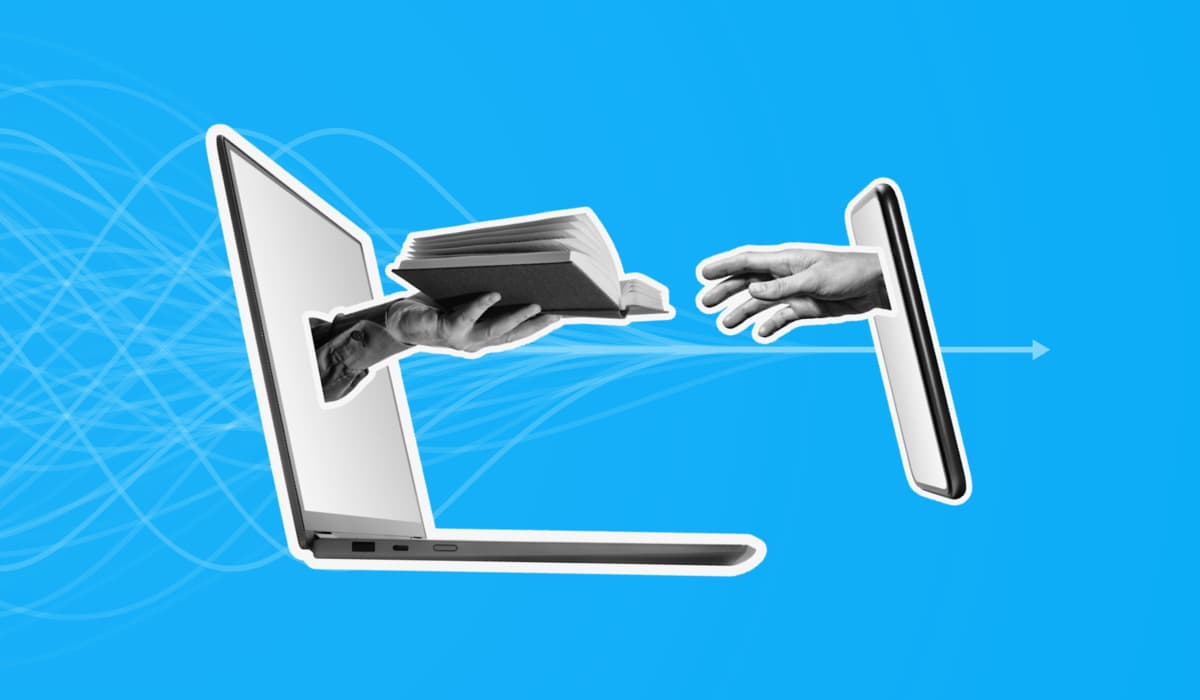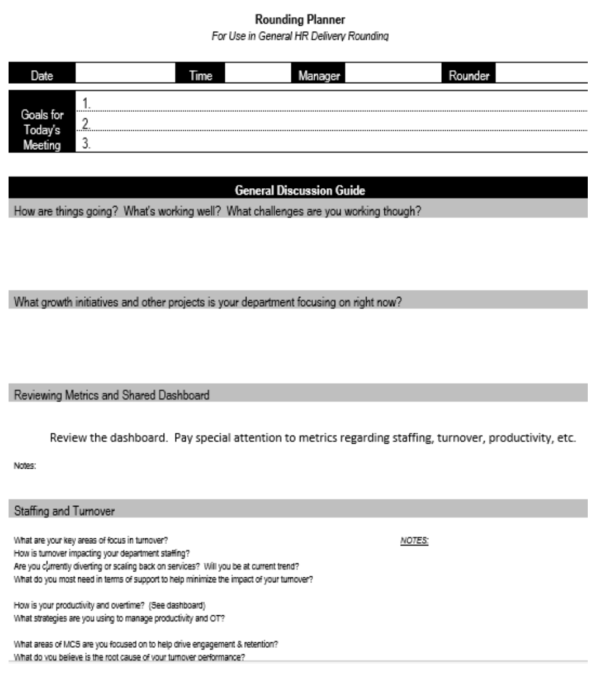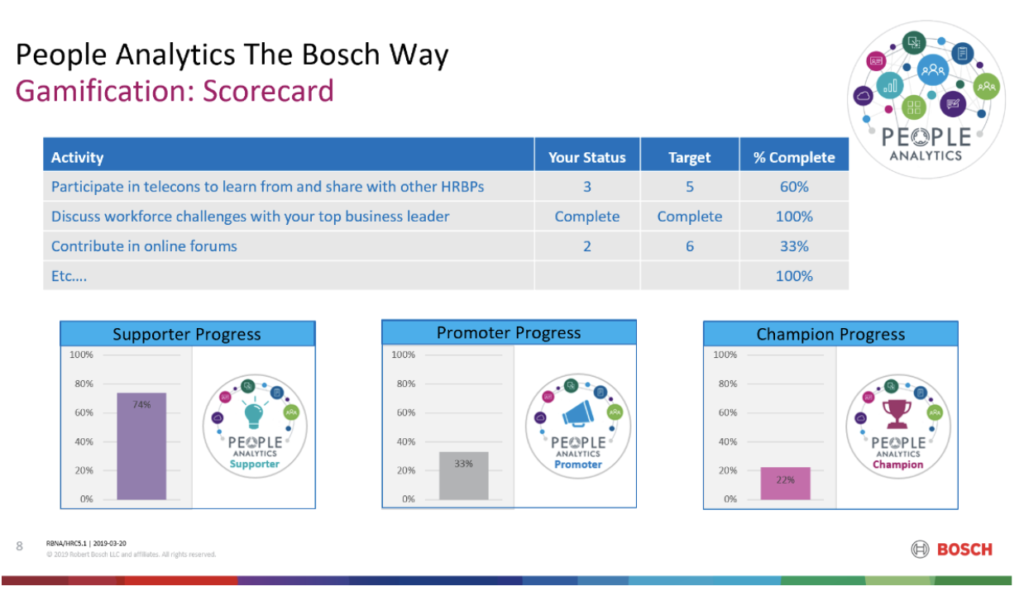How Four Companies Enable their HRBPs with People Analytics
Many organizations want to enable their HRBPs to adopt a data-driven approach. Four leaders share how their HRBPs are using people analytics.

Many organizations want to enable their HRBPs to adopt a data-driven approach and be the ambassadors for people analytics while providing consultative support to the business on talent strategy. They have often already engaged in transformation of their HR service delivery model and the role of the HRBP. Much of that work has been focused on leveraging automation for record keeping and transaction management. This transformation then opened opportunities for HR generalists to move into a strategic consultative role and become HR business partners to lines of business.
During these transformations, organizations are expecting these HRBPs to deliver strategic talent practices that drive value to the organization. But to drive value these days, part of what is needed is for the HRBPs to be able to adopt a data-driven approach themselves to show their business leaders how talent contributes to organizational performance and outcomes.
But there’s been an obstacle.
A year ago, I interviewed numerous organizations about their practices to succeed and achieve value from people analytics. I spoke with a Vice President of HR Operation–the leader of HR business partners at his organization–about his experience of tasking HRBPs to be people analytics ambassadors. He said:
“Despite the fact we’ve been through an HR transformation and now have HRBPs assigned to provide strategic consulting with business leaders, only 25% are capable of being strategic–and only around 10% are data savvy.”
As I continued to talk with other organizations, I asked if this was true for them too. The answer was a resounding yes and the numbers on the data savvy aspect were even lower for some. Many told me their HRBPs are afraid of data and analytics.
I started speaking on this topic at various conferences and continued to ask the question. Even more resounding yeses. And I asked a question in a survey on leading practices about people analytics challenges, and the number one obstacle to success was, “We do not have a ‘data-driven’ skillset within HR and among our HR business partners.”
Fast-forward to May 2019 and continuing my research on the role of HRBPs, I think this challenge is ably being addressed. Here are some ideas from four leaders of people analytics from four organizations that presented on how they are enabling their HRBPs at Visier’s annual Outsmart conference for people analytics and workforce planning.
Upskilling HRBPs with a COE
At Ascension, the largest faith-based healthcare organization in the US, they are on their third HR transformation. Starting back in 2011-2015, the first transformation focused on centralizing and standardizing their HR systems and technologies and deploying an HR Shared Service Center.
In 2015-2016, they conducted an HR redesign and introduced centers of excellence (COE), including one for workforce analytics. In 2017, they went through another HR redesign, introduced new HR competencies, invested in more “boots on the ground” in the role of HR Advisors (HRBPs), reset expectations and accountabilities for HR delivery, and implemented a people analytics solution. They are currently conducting HR competency assessments, working to reduce silos and improve communications and alignment, expanding people analytics to business leaders, and introducing a new HR Delivery Standard of Work.
One special aspect of building accountability and creating a standard of HR delivery is the use of HR Rounding (see Figure 1). Just as rounding is a core competency in the medical field, HR rounding is now part of HR Associates standard work at Ascension.
Currently, they are focused on improving the usage of people analytics by HR and business leaders and managers. Associates use a Rounding Planner that covers goals for the session, an assessment of how things are going, initiatives underway, and a review of metrics and a shared dashboard.

Figure 1: Sample Rounding report from Ascension
To support competency building of the associates, the Strategic Workforce Planning & Analytics group, headed by Dr. Jason Pagan, now also Head of HR at Ascension Indiana, provides “step by step” guides, quick reference resources and videos available on their social collaboration site. Further, they provide ongoing workshops and tutorials, often attended by HR and the leadership team together.
They have developed a “Storytelling with Data” Workshop. Business leaders have defined their expectations of HR competence. The rounding process and the robust competency building is helping both the HR Advisors and business leaders to be both data-driven in their review of operations and ultimately improving organizational outcomes.
Lighting the Way to Data-Driven Decisions
At CommonSpirit–the merger of Dignity Health and Catholic Health Initiatives, another very large health services organization with more than 150,000 nurses, caregivers, and other staff–Todd Horton, Director, Culture Insights & Planning, says that any HRBP transformation requires thinking more broadly than considering just the toolset to provide people analytics.
For them, it’s important to improve the skillset for HRBPs to become evidence-based practitioners, and their mindset–instilling the yearning to do strategic work, understand the business, and work collaboratively in partnership with the business.
They have built a Lighthouse program, a meaningful icon for their communities where they built healing ministries, that reminds them that HR too needs to design processes to “illuminate what lies in darkness and provide experts to equip, staff, and sustain” their environment.
This program started by looking at HR and what work was to be done, what needed to be created, and what was not in place to ensure that business and HR programs were tied together. They developed an Organizational Health Indicator set of “metrics that matter” (see Figure 2) that track workforce processes like onboarding and business goals such as improving HCAHPS, quality, and productivity. The health indicator is delivered as a dashboard so HRBPs and business leaders can track healthy performance. Outcome measurement result is a way to hold leaders accountable by making the connection to what they care about–business results.

Figure 2: Metrics Matter at CommonSpirit
The Lighthouse program for HRBPs is focused not only on building the skillset related to data and analytics, but also on developing the mindset for them to be strategic consultants. Part of that development is ensuring that constant attention is placed on tying metrics to business goals and working towards improving healthy performance.
Engaging HRBPs as a One-Person Analytics Team
At a Fortune 500 financial institution with 20,000 employees their approach is extraordinary as it is led by a single people analytics leader! One person is making a difference to drive success with people analytics and engage the HRBP community. This leader suggests five ideas:
Pace yourself: Implementing people analytics might be considered a marathon or a sprint but you can never stop. It may start with some trigger. Initial expectations will be high, but enthusiasm may crash when a solution does not deliver instantaneous value. But then, people analytics starts to catch on and people “get it” as they learn and use. Ultimately, the tools and the associated mindsets are integrated into everyday business.
Segment your stakeholders: The same message will not work for everyone, so target by demographics, geography, psychographic, and behavioral dimensions, with the latter being determined by how much a segment engages through use, reading articles, attending webinars, etc.
Ignore half your users: Considering how technology diffuses, focus on innovators, early adopters, and early majority adopters. Forget the late majority and laggards; the laggards will never come around and what will move the late majority won’t come from your efforts but rather from peer pressure.
Stop trying to motivate users: People have a relatively high degree of self-motivation, but what holds them back is their lack of ability, lack of time, and lack of resources. Focus instead on making their tasks easy. For example, break training into bite-sized chunks and provide templates and examples.
Generate your own data: Look for creative ways to measure interest. For example, just sending a monthly email newsletter won’t let you know if it’s being read. However, including hyperlinks to sites allowing data tracking can inform usage. By looking at gaps in use, this tracking may identify where training might help.
Gamifying the HRBP Experience
Bosch is also on an HR transformation journey that embraces people analytics. Its journey started in 2012 with the establishment of a new HR Service Delivery model assigning HRBPs to the field and establishing Centers of Expertise and an HR Shared Service model.
Starting in 2016, Bosch began significant work to enable HR with data. Its current focus is to build a “predictive culture” in which HR will become future-oriented, data-driven decision makers. For this, they needed to build up an analytical skillset, strategic mindset, and adopt an easy-to-use analytics tool.
Steve Rinvelt, Manager of Human Resources Reporting and Analytics at Bosch North America, reports that change management is the key to transforming HR towards this future. The approach at Bosch benefits from Steve’s background as he was an HRBP himself. The three elements of their approach include:
Gamification: To make sure Bosch was transparent about the current and desired future states, the people analytics team established a scorecard (see Figure 3) that included activities HRBPs should be doing to get to their future state.
They broke HRBPs into diverse teams from different levels, countries, business units, and locations, then gave them real world use cases and asked them to practice. Case examples included using people analytics to address challenges such as retention, diversity, and succession planning. Friendly competition among teams was introduced, with business leaders as judges. And badges were awarded for level attainment of each level, plus spotlight awards for recognition. All of this continues to create a sense of achievement and pride within the HRBP community.

Figure 3: Example of activities appearing on the Bosch People Analytics scorecard
A Strong and Active Sponsor: Bosch’s executive sponsor is responsible for establishing people analytics as a priority, providing guidance, promoting people analytics outside of HR, celebrating successes, and giving support.
Open and Transparent Communication: Communication “The Bosch Way” is robust with resources and information including user forums (recognized as game changing), a newsletter, help guides, blog posts, and links to external education.
The end result of this change management approach is profound. The focus on HRBPs and enabling teams of them to succeed together reinforces behaviors that are leading Bosch to its predictive culture.
While I still hear that organizations are challenged in making HRBPs ambassadors for people analytics and supporting the shift to making data-driven decisions, it’s clear there are organizations such as these that have embraced the challenge. At Visier, we are keenly aware of the critical importance of empowering the HRBP. Here are more examples of what works.
We also welcome HRBPs to contact us to learn more about our education and development resources. This is just one part of a larger change management approach that includes leading practices of successful people analytics organizations.


